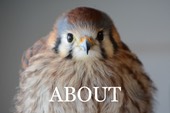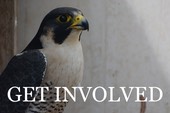Goodbye 2016

2016 is in the history books, and what a year it was. It was one of the busiest years ever with 929 admissions, including 425 raptors. It was a year of many accomplishments.
We added a new, full-time staff position in March, welcoming wildlife rehabilitator Samantha Castoldi.
After just 15 months, our digital x-ray system paid for itself in veterinary expense savings. It is an indispensable asset in helping to evaluate the condition of our patients.
The ingested lead program was expanded, with 159 birds being tested for lead in their blood. The program will expand in 2017 with the generous support of Magellan Diagnostics, Inc., manufacturer of the our lead testing machine. Magellan is donating half of the lead test kits we use in 2017.
All this was made possible by the generous support of our members and the hard work of dedicated staff and volunteers. We make an awesome team and I am deeply grateful for each and everyone of you. I am excited about what we will be able to accomplish together in 2017.
Great Horned Owl 16-923

The last two weeks of 2016 brought many broken bodies that we could not save, but on December 30th a Great Horned Owl from Baker County was transported to Pendleton by volunteer Chris. The owl was extremely emaciated, dehydrated and anemic. She had edema in her right wing and the wing drooped noticeably. The cause of her condition is not known, but electrocution is suspected. If you compare the wings in the radiograph below, the difference is due to the edema in the right wing.

The owl weighed 947 grams when admitted. Her normal weight is probably greater than 1300 grams. The radiograph below is of a Great Horned Owl who weighed 1471 grams. Notice the difference in body mass.

The Packed Cell Volume (a measure of the percentage of red blood cells in the blood) of the emaciated owl was 15. The PCV of the normal owl above was 47. The PCV of the emaciated owl is artificially elevated due to her extreme dehydration. If fully hydrated, her PCV would probably be 7 or 8 (a PCV of less than 10 often results in death). So far, she is responding to supportive care. The hope is that her body will begin producing red blood cells fast enough to increase her PCV while we slowly increase her hydration.







